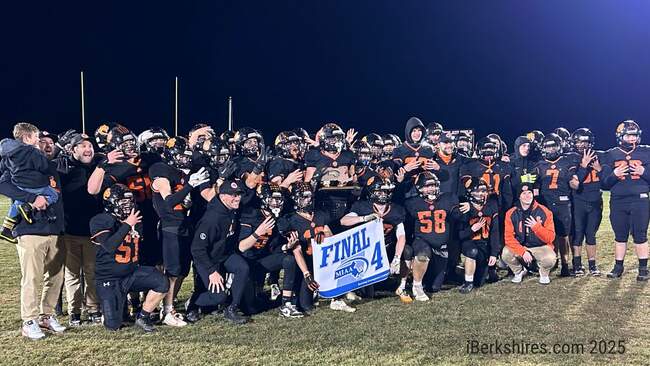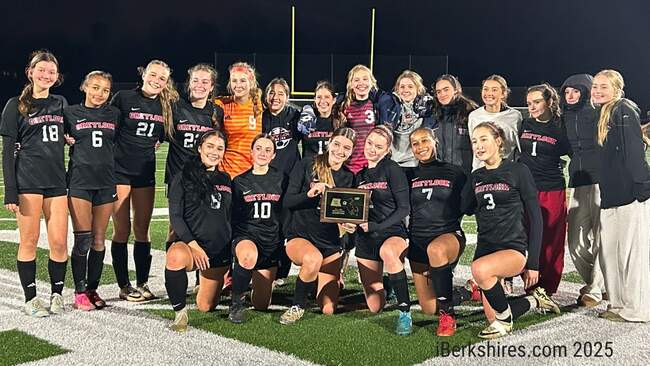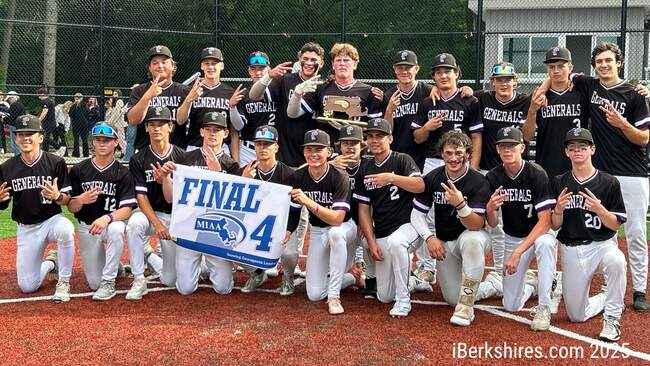

'An Uncommonly Fine Head': The Life and Times of Agrippa Hull
 Agrippa Hull, a Revolutionary veteran, was a well-known resident and landowner in Stockbridge. Agrippa Hull, a Revolutionary veteran, was a well-known resident and landowner in Stockbridge. |
STOCKBRIDGE, Mass. — In the days following the War for Independence, he came to be one of the most celebrated African-American Berkshirites of his time, yet sadly his name is not particularly well known to locals today.
Not nearly as well remembered as that of Elizabeth Freeman (Mum Bett), with whom he worked and lived beside, Hull's life nonetheless intersected with pivotal pieces of history and left a lasting legacy on the struggle for racial equality in the United States.
"Agrippa Hull was one of the most remarkable and unnoticed African Americans of the revolutionary era," according to UCLA historian Gary B. Nash, author of "Friends of Liberty: Thomas Jefferson, Tadeuz Kosciuszko, and Agrippa Hull."
Though sources disagree on several facts of his early life, it is believed he was born free in Northampton in 1759 to Bathsheeba and Amos Hull, the latter of whom was reputed by some to have been an African prince. At around the age of 6, Hull was sent to live with the family of Joab Benny in the town of Stockbridge.
Little is known about his early life, but beginning with the onset of war his exploits become far better documented. Just barely 18, on May 1, 1777, Hull enlisted in the Continental Army, in which he served with distinction for the next six years.
Joining the regiment under Gen. John Paterson of Lenox, Hull was present for Burgoyne's surrender at Saratoga, persevered through the brutal winter at Valley Forge, and fought at the legendary Battle of Monmouth in New Jersey.
In 1779, Hull was reassigned as a personal aide to Tadeus Kościuszko, the Polish military engineer whose support of the Patriot cause helped win the war for the Colonial rebels. A strong comradery emerged between the two over the 50 months Hull worked closely with Kościuszko, a friendship that had a profound influence on the Polish nobleman's abolitionist views.
For more than a year, Hull attended Kościuszko as he worked vigorously on the fortifications at West Point, then proceeded south with him into the crucible of the most ferocious phase of the war. Kościuszko served as chief engineer under Nathanael Greene as his ragged Colonial force battled with the army of General Cornwallis across the Carolinas. There could be seen firsthand the desperation bred by slavery and its detriment to the war effort, as plantation slaves flocked to the only real freedom being offered them, by joining the British.
The close of the war left the pro-liberty Pole deeply impressed with Hull, whom he invited to return to his home country with him, and disillusioned with dichotomy he saw in the American colonies. In his will, he named longtime friend Thomas Jefferson executor, asking that he used the value of his estate to purchase the freedom of as many slaves as possible. Jefferson agreed, but reluctant to upset friends and supporters in the slavery-based southern economy, never followed through with the promise. Some later opined that if Jefferson had kept his word, it may have begun a chain of events that could potentially have averted the Civil War.
Hull declined the invitation to Poland, returning home to Stockbridge in 1783 with his discharge papers signed by General Washington, which he kept with pride to the end of his days.
He found work in the home of Theodore Sedgwick, who had recently won the Mum Bett case that set the precedent for the abolition of slavery in Massachusetts, and here Hull worked along with Bett for nearly two decades.
In 1785, he applied his earnings toward a small piece of land by the Housatonic River, the beginnings of a farm that would grow over the years until he was by far the largest black landowner in town, and ahead of about 40 percent of the white householders in assessed land by his early 40s. Also in 1785, he married Jane Darby, a slave who had fled from New York and was ultimately freed with some interceding negotiation by Sedgwick. They raised four children together.
In 1796, he made a visit to New York City to reunite with his old friend Kościuszko while he was in the country, and again traveled to meet with the Marquis de Lafayette on his visit.
In the early 1800s, he left the service of Sedgwick, who had shifted considerably in his political views in the years following Shays Rebellion. So did Freeman, who became his neighbor along what was then called Negro Pond.
Grippy, as he was known to many, had by that time become exceedingly popular in town, and widely known for his sage wisdom and witty repartee.
"His presence at weddings seemed almost a necessity," wrote town historian Electa Jones, where he "wedged himself and his good cheer into every crowded corner, his impromptu rhymes and his courteous jokes ... always welcome."
Following the death of his first wife, he married Margaret Timbroke, with whom he built up a successful catering business.
In 1831, he journeyed as part of an entourage from Stockbridge to West Point, by then a military school. There he paid homage to Kościuszko, for whom a statue had recently been erected there, and cadets flocked anxiously around him to hear stories of the Polish officer.
He "was one of a large party that included the young, the gay, and the beautiful," wrote Catherine Sedgwick; "but he was, as most fitting, the most noticed and honored of them all."
Hull remained a beloved fixture in Stockbridge society well into his 80s, his mind and wit remaining sharp.
"Agrippa has an uncommonly fine head, and is remarkable for his excellent understanding and good character," wrote abolitionist Eliza Lee Cabot Follen, who in 1845 published an interview with him in the New York Tribune. "The acuteness and wisdom of his views upon most subjects, and the wit and force of his illustrations, make his conversation so impressive that you remember what he has said long after you have parted from him."
"God will not ask what is our color, but what has been our conduct," Hull told her. "The Almighty made all colors; if we find fault with the work, we find fault with the Workman.
"It is not the cover of the book, but what the book contains is the question. Many a good book has dark covers," he added.
One wonders if this remark, a favorite of his, may have in some way inspired the more famous aphorism "don't judge a book by its cover," which appeared for the first time in print in George Elliot's "Mill On The Floss" in 1860.
Hull died on May 21, 1848, the oldest surviving Revolutionary veteran in town. His grave can be found in the Stockbridge Congregational Church Cemetery, and his portrait hangs in the town's library. Descendants of Hull continue to reside in the Berkshires today.
Sagas of the Shire is born out of an attempt to break new ground, or at least break out of a certain habitual mold of local history storytelling. While the Berkshires have enjoyed many great historians and much outstanding historical writing, it is my belief that there is a great deal that may have fallen by the wayside in its attempt to hammer out a unified narrative in its vision (and marketing) of itself.
Tags: historical figure, sagas of the shire,

.jpg)














